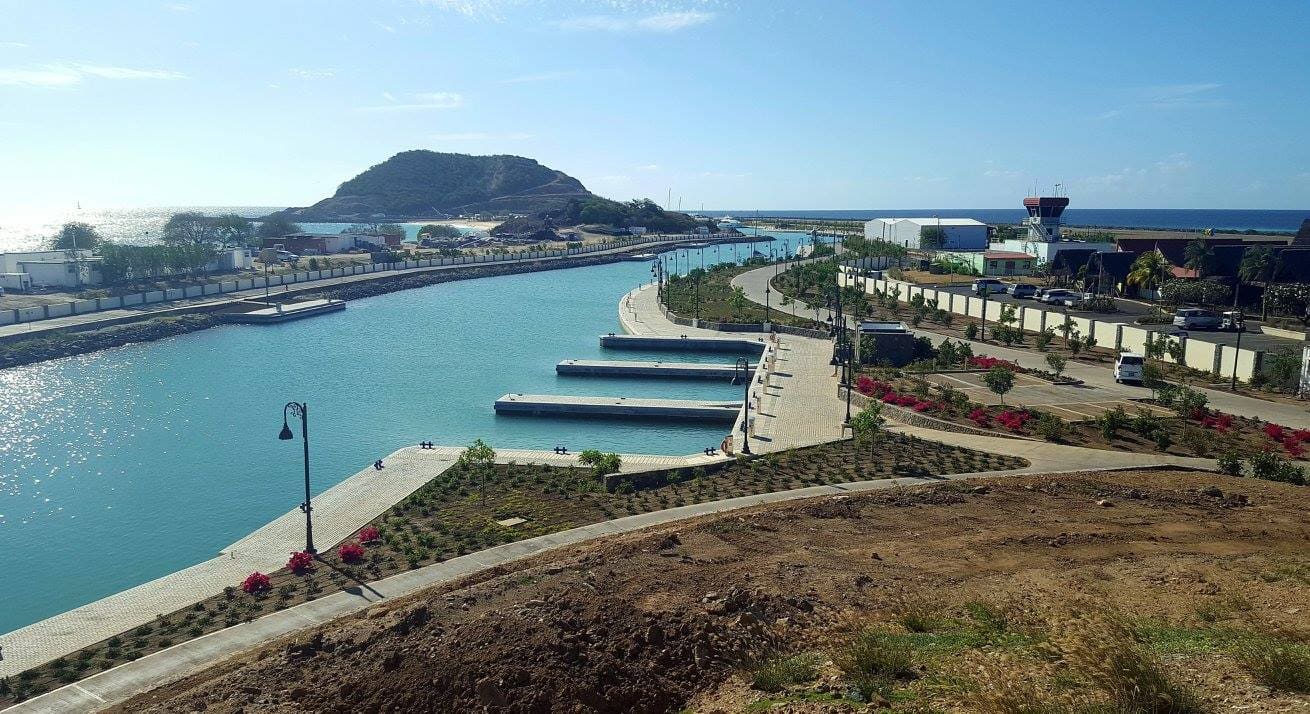Desalination plant to shore up water supplies in tourist town – Australian Broadcasting Corporation

Report on the Proposed Seawater Desalination Plant in Exmouth, Western Australia
Introduction and Strategic Context
The Western Australian town of Exmouth is scheduled to develop one of the state’s first regional seawater desalination plants. This report details the initiative by the state’s Water Corporation, which follows an extensive investigation into the town’s strained water resources. The project is a critical response to mounting pressures from climate change, population growth, and increased strategic importance, aligning with several United Nations Sustainable Development Goals (SDGs).
Key Drivers for the Project
The decision to implement a desalination solution is driven by a convergence of factors that threaten the sustainability of the Exmouth community.
- Water Scarcity and Climate Change (SDG 6, SDG 13): The town’s current water supply, sourced from 34 production bores, is dependent on rainfall for aquifer recharge. Climate modelling predicts a drier future for the region, rendering this source unsustainable. The Water Corporation forecasts an additional annual water requirement of 1.5 billion litres by 2060.
- Infrastructure and Population Pressure (SDG 11): Exmouth’s population of approximately 3,000 residents swells significantly with an influx of 150,000 tourists annually. This, combined with a growing US military presence, has pushed existing water infrastructure to what Shire President Matthew Niikkula describes as a “critical bursting point.”
- Economic and Community Growth (SDG 8, SDG 9): Water scarcity is a direct impediment to economic development. Steve Riley, President of the Exmouth Chamber of Commerce and Industry, noted, “We literally can’t build any more houses because we’re out of water.” The plant is essential for enabling housing expansion, supporting the tourism industry, and facilitating necessary sewage upgrades.
Project Implementation and Sustainable Development
Project Scope and Timeline
The Water Corporation plans a staged completion of the desalination plant by 2030, pending environmental approvals. However, local government bodies are advocating for an accelerated timeline of one to three years to address the urgent need. The project is positioned as a long-term, scalable solution to secure the town’s future.
Alignment with Sustainable Development Goals
The desalination plant is a cornerstone of a broader strategy to build a resilient and sustainable community in Exmouth, directly contributing to the following SDGs:
- SDG 6: Clean Water and Sanitation: The primary objective is to provide a “secure, climate-independent source” of drinking water, reducing reliance on vulnerable groundwater supplies.
- SDG 7: Affordable and Clean Energy: The project is complemented by the development of a 9.6-megawatt solar farm by Horizon Power, which aims to supply up to 80% of Exmouth’s electricity, ensuring the energy-intensive desalination process is powered by clean energy.
- SDG 9: Industry, Innovation, and Infrastructure: The plant represents an investment in resilient, modern infrastructure, future-proofing the town against climate and demographic shifts.
- SDG 11: Sustainable Cities and Communities: By securing essential water and energy supplies, the initiative enhances the long-term sustainability and resilience of the Exmouth community.
- SDG 16: Peace, Justice, and Strong Institutions: A stable water supply is deemed critical for national security, supporting the expanded operations at the RAAF’s Learmonth base and the Harold E Holt naval communication base.
Environmental and Cultural Considerations
Protecting Terrestrial and Marine Ecosystems
The project plan incorporates significant measures to mitigate environmental and cultural impacts, reflecting a commitment to SDG 14 (Life Below Water) and SDG 15 (Life on Land).
- Protection of Land and Cultural Heritage (SDG 15): The decision for desalination was made after determining that exploiting additional groundwater sources would pose a risk to culturally significant sites within the Cape Range National Park.
- Marine Environment Protection (SDG 14): A primary environmental concern is the management of brine, the high-salinity byproduct of desalination. The Water Corporation is undertaking at least a year of further study to determine the optimal location for seawater intake and outfall piping to minimize ecological impact. The design aims to ensure that the discharged brine dilutes to ambient seawater salinity within 30 to 50 metres of the outfall point.
Conclusion
The development of a seawater desalination plant in Exmouth is a strategic and necessary initiative to address critical water shortages driven by climate change and population growth. By integrating this project with renewable energy infrastructure and careful environmental management, the town is advancing a comprehensive model for sustainable regional development. The project is vital for securing the town’s economic future, community well-being, and strategic role, demonstrating a practical application of the Sustainable Development Goals in building a resilient future.
Analysis of Sustainable Development Goals (SDGs) in the Article
1. Which SDGs are addressed or connected to the issues highlighted in the article?
- SDG 6: Clean Water and Sanitation – The core of the article is about addressing water scarcity in Exmouth by building a desalination plant to ensure a secure and clean water supply.
- SDG 7: Affordable and Clean Energy – The article mentions the construction of a large solar farm to supply the majority of Exmouth’s electricity, directly linking the town’s development to clean energy.
- SDG 9: Industry, Innovation, and Infrastructure – The article highlights the town’s infrastructure being at a “critical bursting point” and discusses the development of new, resilient infrastructure (desalination plant, solar farm) to support the community and its growth.
- SDG 11: Sustainable Cities and Communities – The focus is on making the town of Exmouth resilient to climate change and population growth by upgrading its essential water and energy infrastructure to support its residents, tourism, and future development, including housing.
- SDG 13: Climate Action – The project is a direct response to climate change impacts, specifically a “warming climate” and predictions that the “region is likely to grow drier.” The desalination plant is an adaptation strategy to build resilience against these climate-related hazards.
- SDG 14: Life Below Water – The article acknowledges the potential environmental impact of the desalination plant, specifically the discharge of highly saline water into the ocean, and mentions the studies being undertaken to mitigate harm to the marine environment.
- SDG 15: Life on Land – The decision-making process for the water solution involved considering the protection of terrestrial ecosystems, as the article notes that using alternative groundwater sources was rejected because it would “put cultural sites in the Cape Range National Park at risk.”
2. What specific targets under those SDGs can be identified based on the article’s content?
-
SDG 6: Clean Water and Sanitation
- Target 6.1: Achieve universal and equitable access to safe and affordable drinking water for all. The article focuses on securing a long-term drinking water source for the 3,000 residents of Exmouth and its growing visitor population, whose current supply is “near-exhausted.”
- Target 6.4: Substantially increase water-use efficiency and ensure sustainable withdrawals and supply of freshwater to address water scarcity. The plan to build a desalination plant is a direct measure to create a sustainable supply (“secure, climate-independent source”) and reduce reliance on the over-stressed local aquifers that depend on rainfall.
- Target 6.b: Support and strengthen the participation of local communities in improving water and sanitation management. The article shows local participation through the Shire President and the Chamber of Commerce, who have “welcomed the decision” and are “heavily advocating to government” on the project’s timeline.
-
SDG 7: Affordable and Clean Energy
- Target 7.2: Increase substantially the share of renewable energy in the global energy mix. The article states that a new solar farm “aims to supply up to 80 per cent of Exmouth’s electricity by next year,” which is a substantial increase in the share of renewable energy for the town.
-
SDG 9: Industry, Innovation, and Infrastructure
- Target 9.1: Develop quality, reliable, sustainable and resilient infrastructure. The article describes the current infrastructure as being at a “critical bursting point.” The new desalination plant and solar farm are investments in resilient infrastructure to support the town’s population, economic growth, and even “national security.”
-
SDG 11: Sustainable Cities and Communities
- Target 11.5: Significantly reduce the number of people affected by water-related disasters. The project is a proactive measure to prevent a future water crisis (a slow-onset disaster) caused by drought and climate change, thereby protecting the community from its effects.
- Target 11.b: Implement integrated policies and plans towards inclusion, resource efficiency, mitigation and adaptation to climate change, resilience to disasters. The plan for Exmouth is an integrated one, combining a water security project (desalination) with a clean energy project (solar farm) as a direct adaptation to climate change (“warming climate,” “region is likely to grow drier”).
-
SDG 13: Climate Action
- Target 13.1: Strengthen resilience and adaptive capacity to climate-related hazards and natural disasters. The desalination plant is explicitly described as a “climate-independent source,” which is a key adaptation strategy to strengthen the town’s resilience against the climate-related hazard of increasing dryness and unreliable rainfall.
-
SDG 14: Life Below Water
- Target 14.1: Prevent and significantly reduce marine pollution of all kinds, in particular from land-based activities. The article mentions the “serious environmental concerns” regarding the brine discharge, which is a form of marine pollution. It notes that studies are underway to “minimise any sort of environmental impacts” from the outfall pipes.
-
SDG 15: Life on Land
- Target 15.1: Ensure the conservation, restoration and sustainable use of terrestrial and inland freshwater ecosystems. The article mentions that an alternative solution, drawing more groundwater, was rejected because it would “put cultural sites in the Cape Range National Park at risk,” showing that the conservation of this terrestrial area was a factor in the decision.
3. Are there any indicators mentioned or implied in the article that can be used to measure progress towards the identified targets?
-
For SDG 6 (Clean Water and Sanitation)
- Indicator: The volume of additional water required. The article quantifies the future need, stating Exmouth “will need an additional 1.5 billion litres each year by 2060.” The output of the new plant can be measured against this forecast.
- Indicator: The number of people served. The project aims to secure water for “~3,000 residents” plus “150,000 tourists passing through the town annually.”
-
For SDG 7 (Affordable and Clean Energy)
- Indicator: Proportion of renewable energy. The article provides a clear metric: the solar farm “aims to supply up to 80 per cent of Exmouth’s electricity.”
- Indicator: Renewable energy capacity. The article specifies the size of the project: a “9.6-megawatt solar farm.”
-
For SDG 9 & 11 (Infrastructure & Sustainable Communities)
- Indicator: Qualitative assessment of infrastructure resilience. The current state is described as a “critical bursting point,” while the goal is to create a “secure” supply that allows for expansion, such as building more houses.
- Indicator: Constraints on development. The statement “We literally can’t build any more houses because we’re out of water” serves as a baseline indicator of infrastructure failure, which the new plant aims to resolve.
-
For SDG 14 (Life Below Water)
- Indicator: Measurement of pollution concentration. The article mentions the brine discharge will be “about twice as saline as normal seawater.”
- Indicator: Area of environmental impact. A qualitative indicator of mitigation success is provided: “Within 30 or 50 metres of where we put the seawater back … you couldn’t tell the difference between what is just regular seawater and what is the brine area.”
Table of SDGs, Targets, and Indicators
| SDGs | Targets | Indicators Identified in the Article |
|---|---|---|
| SDG 6: Clean Water and Sanitation | 6.1 (Access to drinking water) 6.4 (Address water scarcity) |
– Securing water for ~3,000 residents and 150,000 annual tourists. – Need for an additional 1.5 billion litres per year by 2060. |
| SDG 7: Affordable and Clean Energy | 7.2 (Increase share of renewable energy) | – A 9.6-megawatt solar farm. – Aim to supply up to 80% of the town’s electricity. |
| SDG 9: Industry, Innovation, and Infrastructure | 9.1 (Develop resilient infrastructure) | – Addressing infrastructure at a “critical bursting point.” – Enabling construction of new housing. |
| SDG 11: Sustainable Cities and Communities | 11.5 (Reduce impact of water-related disasters) 11.b (Implement integrated plans for climate adaptation) |
– Creating a climate-resilient water and energy system for the town. – Overcoming constraints on building new houses. |
| SDG 13: Climate Action | 13.1 (Strengthen resilience to climate-related hazards) | – Building a “climate-independent” water source in response to a “warming climate.” |
| SDG 14: Life Below Water | 14.1 (Reduce marine pollution from land-based activities) | – Discharge is “twice as saline as normal seawater.” – Aim for negligible impact “within 30 or 50 metres” of the outfall. |
| SDG 15: Life on Land | 15.1 (Ensure conservation of terrestrial ecosystems) | – Decision to not use groundwater sources to protect “cultural sites in the Cape Range National Park.” |
Source: abc.net.au

What is Your Reaction?
 Like
0
Like
0
 Dislike
0
Dislike
0
 Love
0
Love
0
 Funny
0
Funny
0
 Angry
0
Angry
0
 Sad
0
Sad
0
 Wow
0
Wow
0



























;Resize=805#)


















































